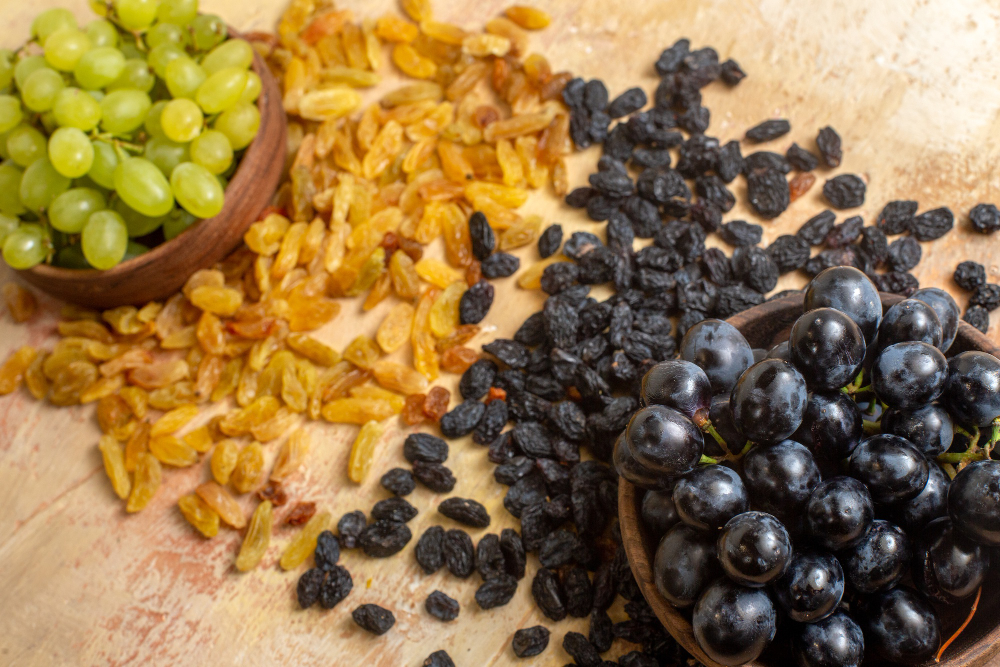How Different Grape Varieties Shape the Texture and Sweetness of Sultana Raisins
Sultana raisins are prized worldwide for their balance of sweetness and texture. However, not all sultana raisins are created equal. The grape variety used directly influences these essential qualities, impacting everything from chewiness to sugar concentration. Understanding these effects can guide buyers, importers, and producers to make informed choices that match market demands and consumer preferences.
At first glance, one might wonder why raisins from different sources taste or feel so different despite all being labeled as sultana. The answer lies primarily in the grape variety selected before drying. This subtle yet critical difference can determine the commercial success of bulk raisin shipments and satisfy specific consumer expectations.
1. The Foundation: Common Grape Varieties for Sultana Raisins
The most commonly used grape variety for Sultana light Raisin is the Thompson Seedless grape, renowned for its thin skin and naturally high sugar content. Other varieties such as Sultanina are closely related but can differ slightly in texture and flavor. These varieties have been cultivated and refined over decades to optimize raisin production.
2. How Grape Variety Influences Raisin Texture
Texture in raisins is defined by factors like firmness, chewiness, and moisture retention. Grapes with thinner skins generally produce softer raisins, while thicker-skinned varieties create a denser, chewier product. For example, Thompson Seedless grapes dry into raisins with a tender yet resilient bite, making them versatile in culinary uses.
Additionally, the water content retained in the grape during drying depends on grape skin permeability and pulp structure, both of which vary by variety. These physical traits affect the final raisin’s chew and mouthfeel.
3. The Role of Sugar Content in Determining Sweetness
Sweetness in raisins primarily depends on the concentration of sugars such as glucose and fructose in the grape before drying. Some varieties naturally accumulate more sugar, resulting in a sweeter raisin post-drying. For instance, Thompson Seedless grapes tend to have higher sugar levels than other varieties, which contributes to their popularity in sweet raisin markets.
Biochemically, different grape varieties vary in their sugar metabolism and storage during ripening. These differences explain why raisins from one variety taste noticeably sweeter than another, even under similar drying conditions.
4. Scientific Insights into Texture and Sweetness Variations
Texture and sweetness differences are not random but arise from the grape’s genetic makeup and environmental factors during growth. Sugar profiles influence sweetness, while skin thickness and pulp composition affect texture. Studies show that grapes with higher sugar concentrations also tend to produce raisins that are less firm but more pliable, creating a desirable chewy softness.
read more: Effect of Pre-Drying Grape Acidity on Final Color of Sultana Raisins
5. Practical Implications for Bulk Buyers and Exporters
For buyers importing sultana raisins in bulk, understanding these varietal effects helps in selecting suppliers who grow grapes that meet their texture and sweetness criteria. Markets favor raisins with consistent chewiness and a balanced sweetness level, so specifying the grape variety can minimize quality variability.
Exporters benefit from this knowledge by marketing raisins based on grape variety attributes, allowing them to target niche buyers seeking specific textures or sweetness profiles.
Why Grape Variety Matters in Sultana Raisin Quality
In sum, the grape variety used for sultana raisins plays a vital role in defining texture and sweetness. Recognizing these differences aids buyers and sellers in making informed decisions, ultimately improving product consistency and consumer satisfaction. This understanding can transform bulk raisin trading from a gamble into a strategic choice aligned with market demands.
FAQ
What grape varieties are typically used for sultana raisins?
Thompson Seedless and Sultanina are the most common varieties used for sultana raisins.
How does grape variety affect the texture of sultana raisins?
Grape skin thickness and pulp structure determine firmness and chewiness, with thinner skins leading to softer raisins.
Why do some sultana raisins taste sweeter than others?
Sugar content varies among grape varieties, influencing the sweetness after drying.
Can grape variety influence raisin moisture content?
Yes, grape skin permeability affects how much moisture remains, impacting texture.
How can importers use grape variety information?
Importers can specify grape varieties to ensure consistent sweetness and texture in bulk purchases.

